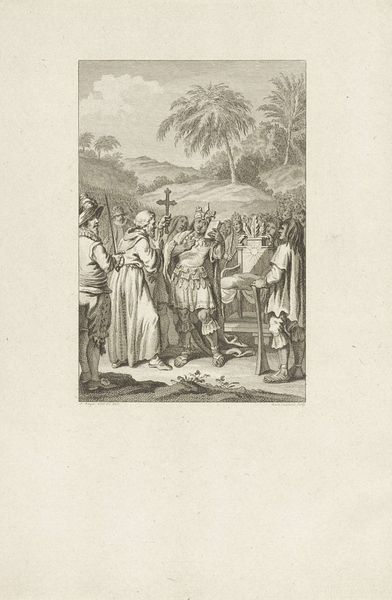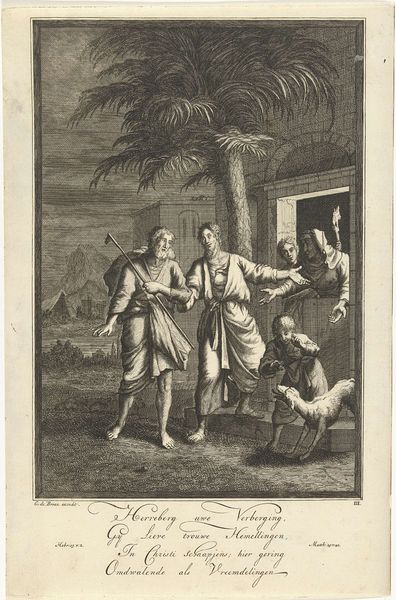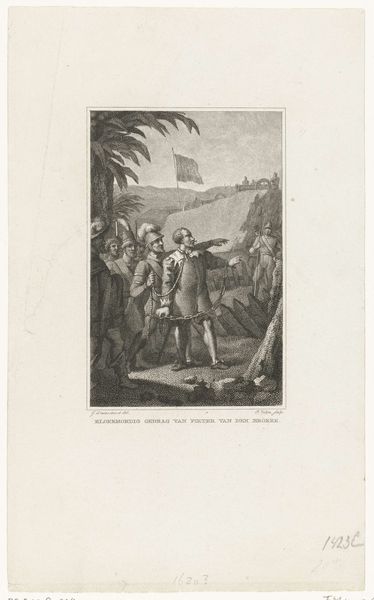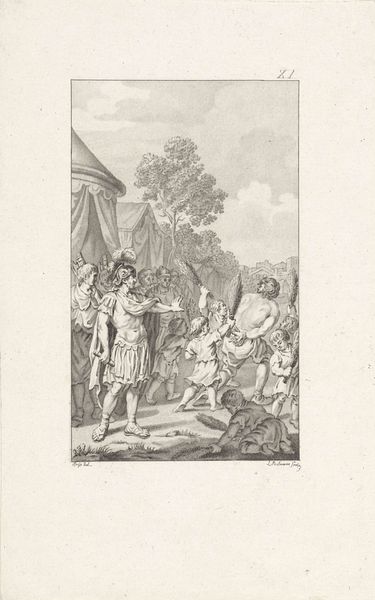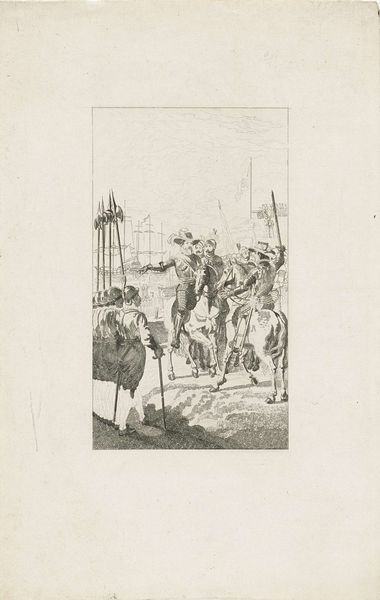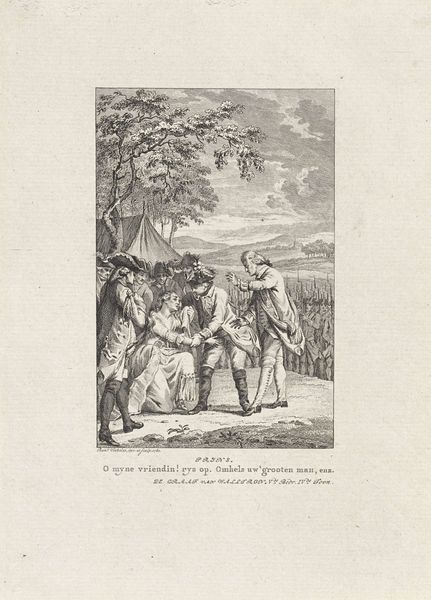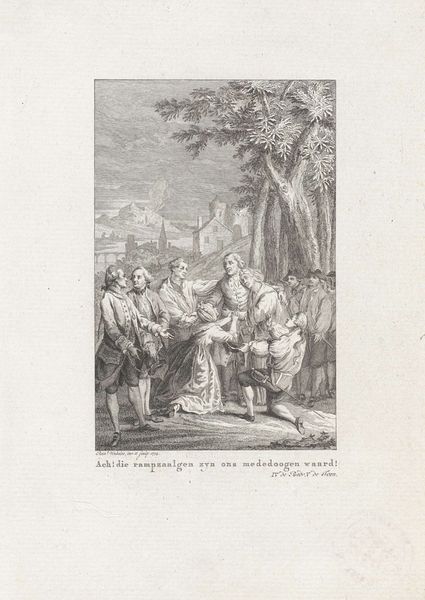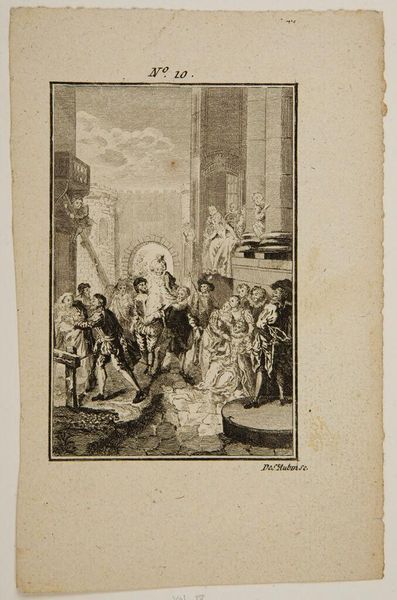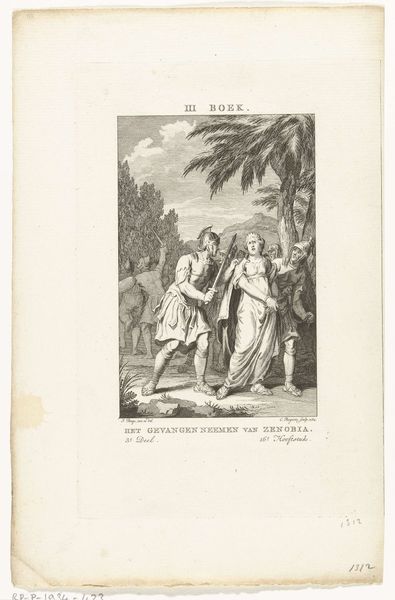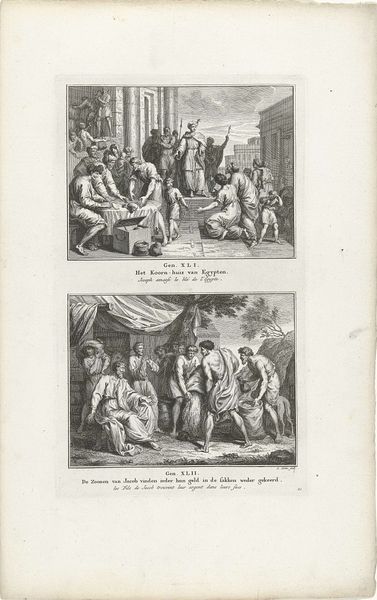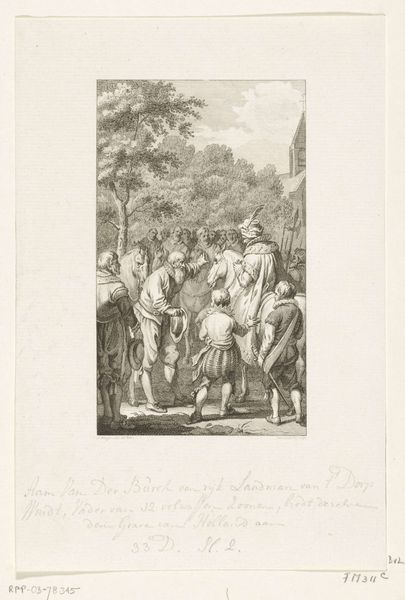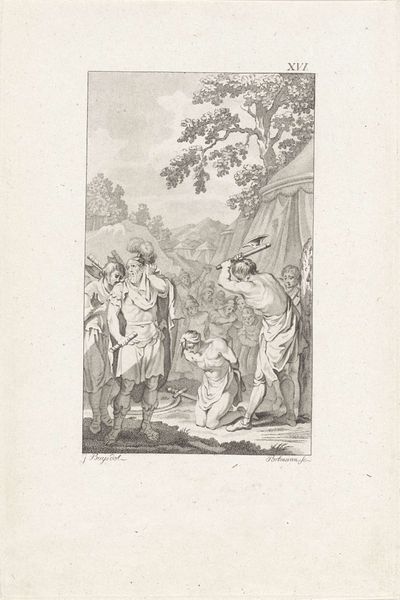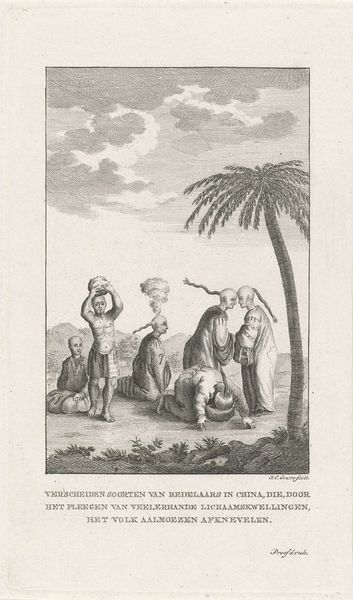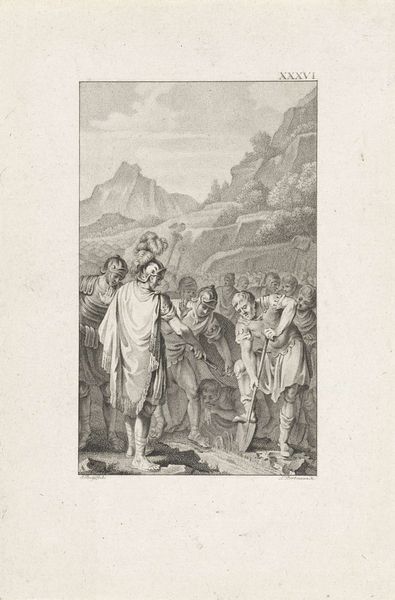
print, etching, engraving
#
neoclacissism
#
narrative-art
# print
#
etching
#
old engraving style
#
figuration
#
old-timey
#
line
#
history-painting
#
engraving
Dimensions: height 230 mm, width 150 mm
Copyright: Rijks Museum: Open Domain
Editor: This is "Psammetichus III Taken Prisoner by Cambyses II," an engraving by Reinier Vinkeles from 1780. The stark, linear style really amplifies the desolation of the scene. What do you make of this work? Curator: The power of this print lies in how Vinkeles employs Neoclassical imagery to depict a moment heavy with historical and psychological significance. Notice the obelisk, a symbol of Egyptian power, standing in the background, a silent witness to the downfall of Psammetichus. What feelings does that juxtaposition evoke in you? Editor: It feels like a reminder that even great civilizations can fall. The obelisk dwarfs the figures. So what else is important about symbolism in this image? Curator: Precisely. And consider Psammetichus himself. He’s the only figure not weeping. His downcast eyes suggest not a lack of feeling, but rather a profound sense of personal and national humiliation. Think about the cultural memory associated with the fall of Egypt – what emotions are stirred when seeing this visual representation? Editor: A sense of inevitability, maybe? Or even that human drama transcends time, it is still captivating! Curator: Exactly! The restrained emotion, characteristic of Neoclassicism, enhances the tragedy. By minimizing outward display, Vinkeles invites the viewer to contemplate the deeper psychological impact of conquest and loss, relying on visual language familiar to his contemporary audience. Are there specific figures that draw your eye? Editor: I’m drawn to the figures surrounding Psammetichus. Their grief contrasts with his stoicism, which emphasizes the gravity of the situation. It seems less about a celebration of victory and more of lament. Curator: That's astute. Vinkeles uses that contrast to portray the multi-layered dimensions of human suffering during wartime and subjugation. We also are directed to the enduring power of visual symbols to communicate complex cultural memories. Editor: Seeing those symbols adds more depth. Thanks! It makes you wonder what symbols in our lives will be like for others in centuries to come. Curator: Indeed, thinking about images through a cultural and psychological lens can deeply enrich our understanding of history and ourselves.
Comments
No comments
Be the first to comment and join the conversation on the ultimate creative platform.
